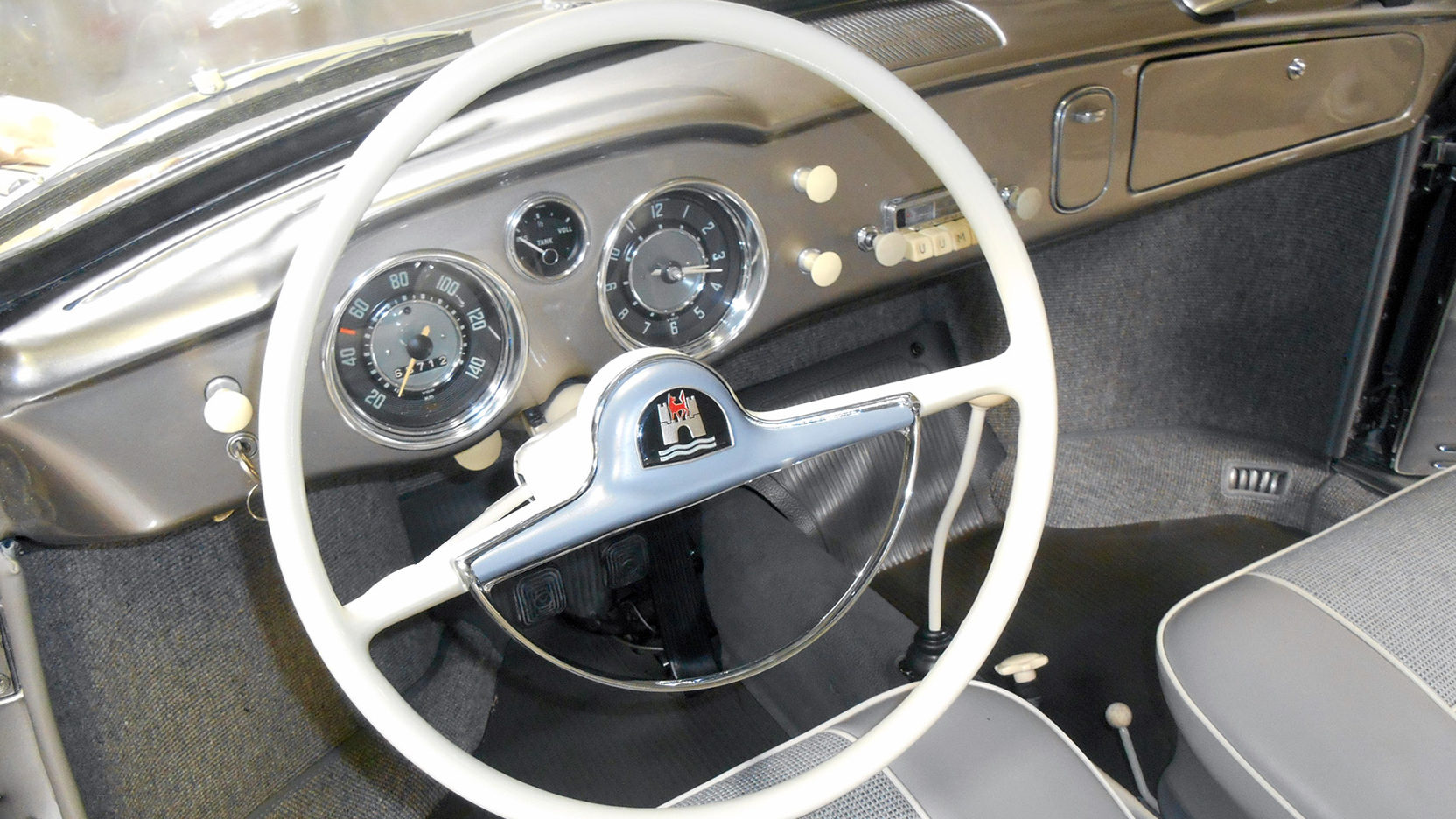VW Karmann Ghia: The German car with the sexy Italian shape
Carrozzeria Ghia put the clothes on some of the world’s coolest classic cars. And what beautiful clothes they are. The DeTomaso Pantera, Dual Ghia, Fiat 8V Supersonic, Maserati Ghibli, and Fiat Jolly—not to mention numerous concept cars and special Ferraris in the 1950s—all donned Ghia coachwork to great effect. Mention Ghia to the average Joe, however, and he’ll think of something a lot more humble but no less beautiful, the Volkswagen Karmann Ghia.
While most classic VWs are charming in their ugliness, the Karmann Ghia is straight-up gorgeous. Never mind that it’s essentially just a Beetle in an expensive suit.
Before Volkswagen became the official flower-power flagship of the ’60s, and before the lighthearted “Think Small” ad campaign, Volkswagen’s image was one of cheap, economical Bugs and buses. That needed to change, and that’s where Ghia came in. Starting off with a modified Type 1 Beetle platform in 1953, Ghia designers worked up a prototype that looked like a scaled-down version of the Chrysler d’Elegance concept car from the year before. Karmann, in Osnabrück, Germany, was already under contract with Volkswagen to build Beetle Cabriolets and had the capacity to build more cars, so it was selected to build VW’s new halo model. And voila, a car was born.



The bluntly-named Karmann Ghia, called the Type 14 internally, debuted in the U.S. with a base price of less than $2400 (about $22,600 today), which was a lot more than a Beetle but still affordable. A convertible joined the lineup in 1958 and typically carried a $300–$400 premium. After 1959, the headlights were raised slightly to meet safety regulations Testing an early version, Autocar opined that the Ghia had a “proportion that almost takes one’s breath away.” And despite being a mass-produced car (VW sold more than 400,000 Karmann Ghias), its curvy body was mostly hand-welded, hand-filled, and hand-shaped.
The beauty was never up for debate, but neither was the performance, because there wasn’t any. Always little more than a Beetle underneath, the Karmann Ghia started out with 30 horsepower and never made more than 60. It’s a fun car to drive on the right road (and the aftermarket for VW performance bits is huge, so more power is certainly possible), but its sexy Italian shape wrote a check that the wheezy air-cooled flat-four never could cash. The 2+2 Karmann Ghia therefore never fit into a neat category. Too sparse to be a luxury car. Too small to be a family car. Too slow to be a sports car or grand tourer. But no matter, the Karmann Ghia proved more popular than expected. Production doubled in short order, and people kept buying them right up until the end in 1974.
Volkswagen, not afraid to poke fun at itself, was also the first to admit the Karmann Ghia’s lack of speed. One ’60s ad featured a Karmann Ghia dressed up with stripes and numbers, as if ready to race. The caption simply reads “You’d lose,” but the ad does go on to brag that “it might comfort you to know that you’d be driving the best-made loser on the track.” Another ad, this one a TV commercial, featured a red Karmann Ghia driving at full speed trying to triumphantly tear through a paper banner, but instead it gets stuck and can’t break the paper.
Karmann Ghias used to be downright cheap, and as a result lots of them have been wrecked, rusted, or turned into fake Porsche 356s, but there are plenty of them left. And while they still aren’t exactly expensive (average condition #2, aka “excellent,” values for a coupe are $24,600), gone are the days when you could scrounge together a couple grand and drive away in a running Ghia.
All-things air-cooled (well, mainly Porsches) came back into style in a big way in 2014–15, and although Karmann Ghias don’t have Porsche performance, they’re made with similar ingredients and, of course, there are those good looks. We recorded a massive 80-percent spike in condition #2 values in 2015, right in the middle of Porsche-mania. That surge predated recent growth for Beetles and even growth for the Porsche 914. Karmann Ghia prices have been steadier since then, however, with just 4-percent growth since 2015. Most of that growth has been for convertibles in top condition, and currently coupes are worth about 28-percent less than their soft-top siblings. And now that things have settled down, the Karmann Ghia currently carries a Hagerty Vehicle Rating of 56.
[The HVR, based on a scale of 0–100, measures how a collector vehicle is performing compared to the overall market. A score below 50 means a car is lagging behind the market, 50 means it is keeping pace, and a score above 50 indicates a hot market—the higher, the hotter.]

A rating of 56 is a big rebound from the Karmann Ghia’s previous rating of 37, but it still puts it in roughly the middle of the market. The metrics that make up the rating (Hagerty Price Guide values, insurance and quoting activity, private and auction sales) point to things staying where they are.
And where is that? Values range from $6100 for a condition #4 (fair) later coupe to $57,600 for a best-in-the-world 1958–63 convertible, while driver-quality examples can be had from the low to upper teens, depending on year and body style.
None of it is chump change, and there are plenty of rarer, faster, more-exotic cars for the money, but it’s hard not to fall in love with a clean Karmann Ghia. Given its good looks and the massive, passionate community of Volkswagen fans, it’s also easy to make friends in one. Air-cooled VWs are also super-easy to wrench on. With all that going for it, this is one of those classics that is probably always going to remain popular.






